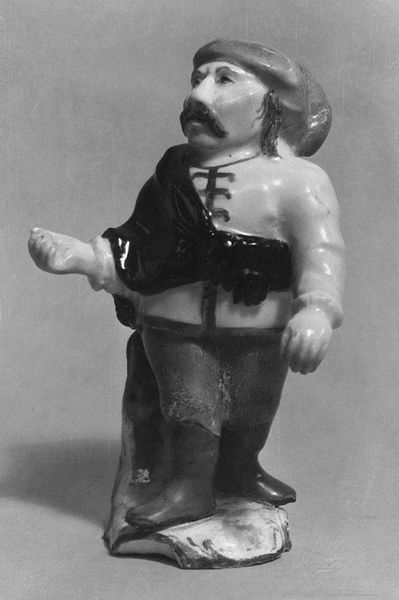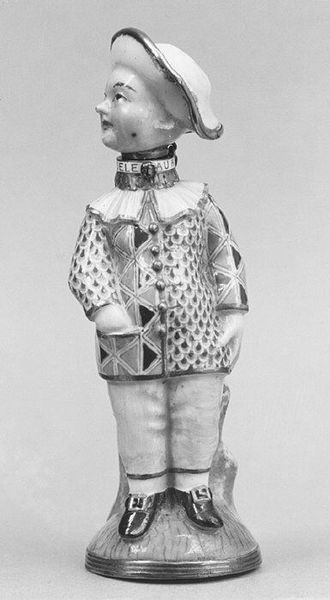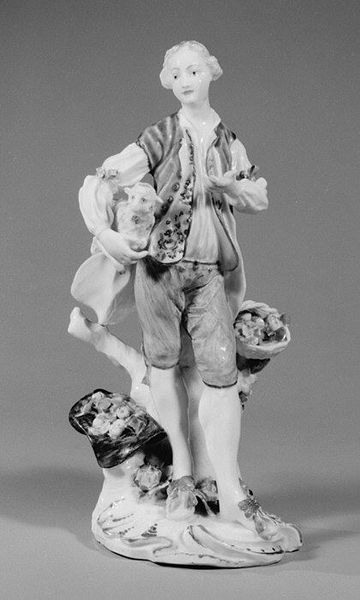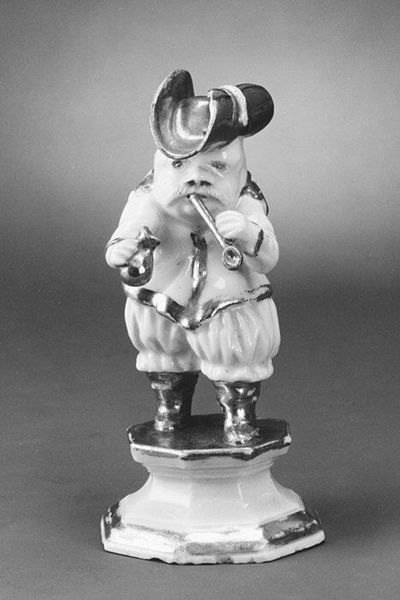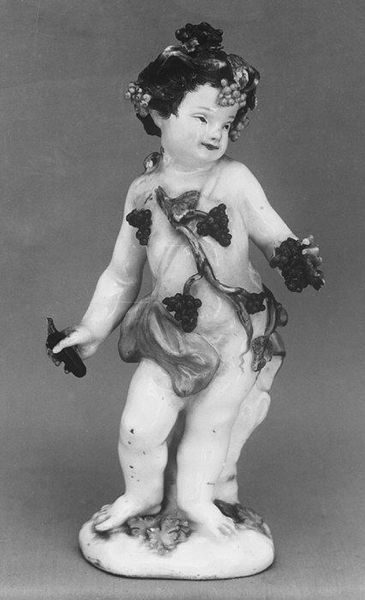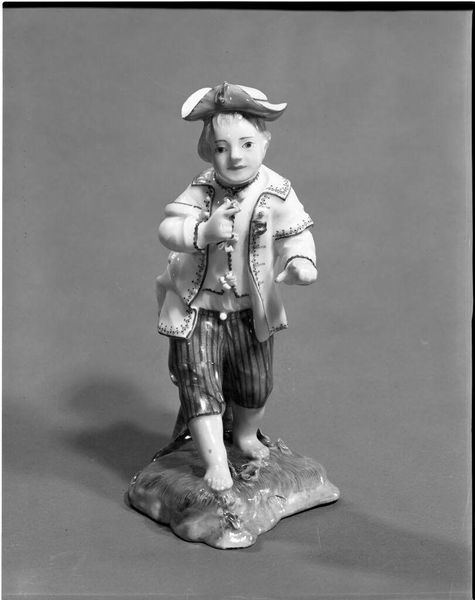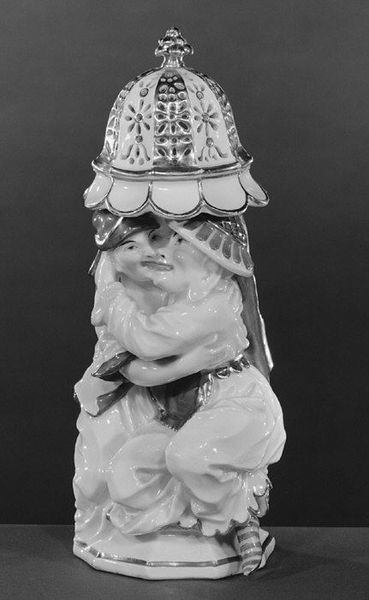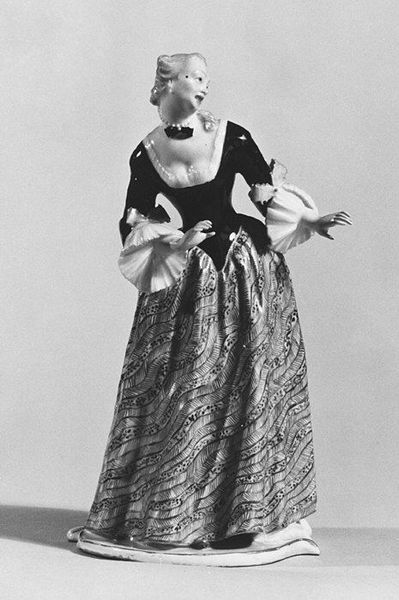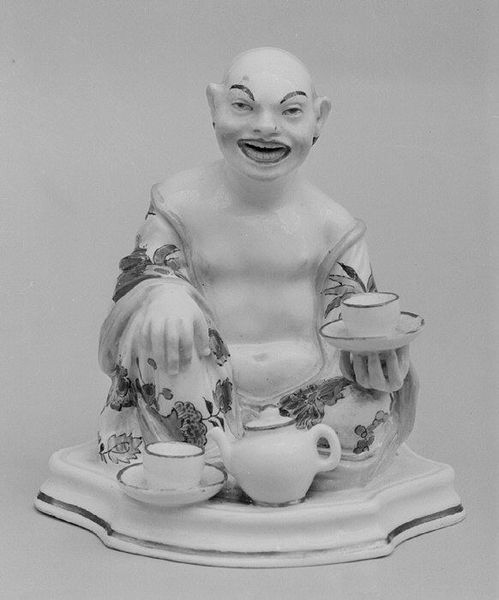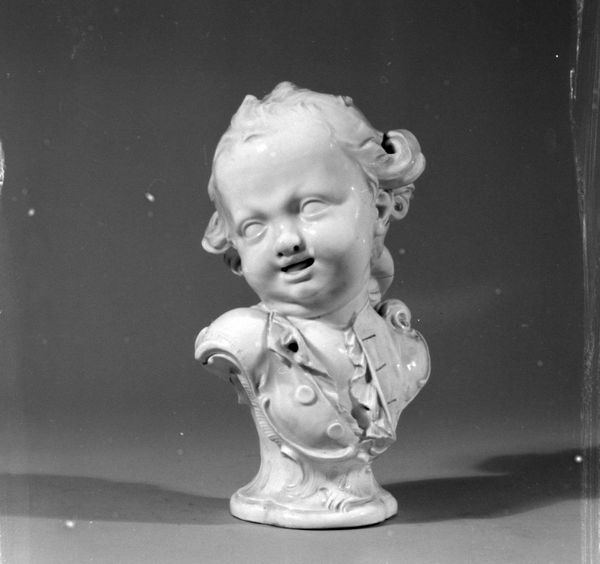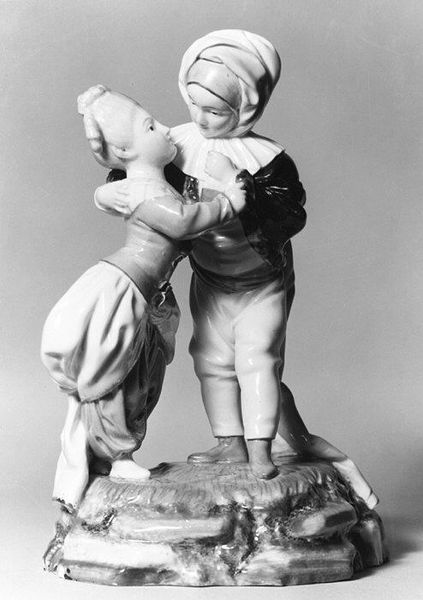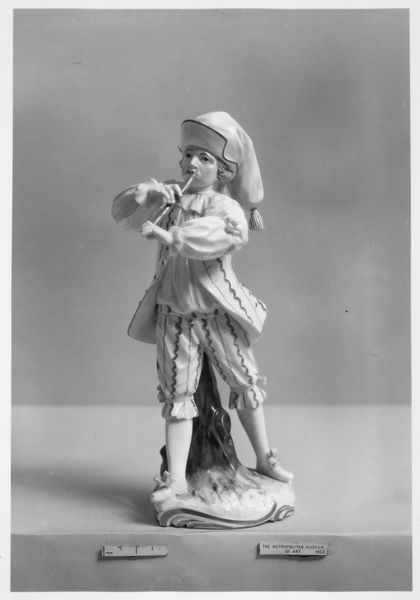
ceramic, porcelain, sculpture
#
ceramic
#
porcelain
#
figuration
#
sculpture
#
genre-painting
#
decorative-art
#
miniature
#
rococo
Dimensions: Height: 3 in. (7.6 cm)
Copyright: Public Domain
Curator: Here we have a fascinating Meissen porcelain sculpture, titled "Female dwarf (one of a pair)," dating back to the early 18th century, around 1715-1725. What's your initial reaction? Editor: Well, there’s a sort of playful ugliness that grabs me. The way her features are exaggerated—it’s both amusing and a bit unnerving. Almost like a caricature with surprisingly refined rococo decorative touches. Curator: Precisely! The piece dances that delicate line. While categorized as decorative art and leaning into the rococo with its whimsical nature, it reflects societal views on dwarves during that period. It seems like this object exists to amuse. What’s your sense of the object's symbolism? Editor: It makes me consider the dwarf as a symbol within the aristocratic imagination. Often, such figures were seen as comical, grotesque even, highlighting the "ideal" of beauty through contrast. The bowl in her hand feels loaded, like some kind of offering, perhaps mocking gestures of noble courtly life. Curator: The object’s small size underscores this almost toylike quality. A scaled-down person to occupy a cabinet of curiosities, where the owner’s power could be exerted over them in a sense? Editor: Exactly! There is power in defining who is and is not within the beauty standards or codes of conduct of court. Think of how these small figurines became very popular, little icons mirroring social anxieties of court culture. Curator: I also find myself wondering about the artist's intent. Were they simply fulfilling a commission, or did a subversive spark exist within their artistry, as you note? Was humor deployed with subversive intent? The question might be unanswerable, but her peculiar grin hints there’s an interior life to her! Editor: Yes! I'm drawn to those potential tensions—between courtly patronage, popular imagery, and then, perhaps, a maker's own interpretation woven within. Curator: I agree completely! The piece encapsulates the complexity of 18th-century European attitudes in a single porcelain figure. It’s more than decorative; it's a cultural snapshot. Editor: Definitely, an enduring miniature mirror reflecting larger social patterns and anxieties! And her smile, still challenging us centuries later…
Comments
No comments
Be the first to comment and join the conversation on the ultimate creative platform.
